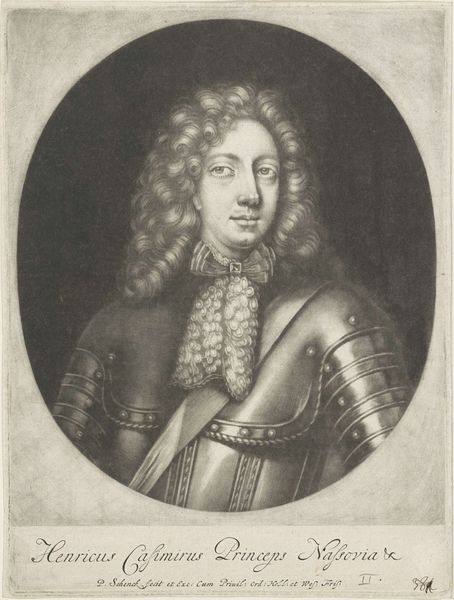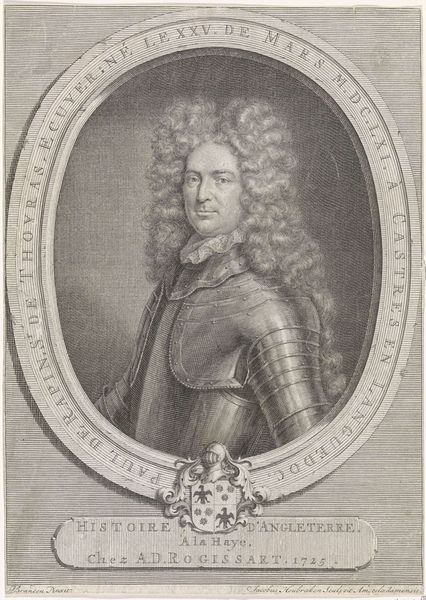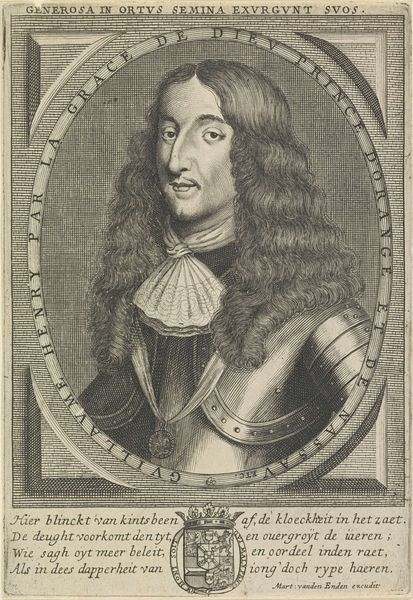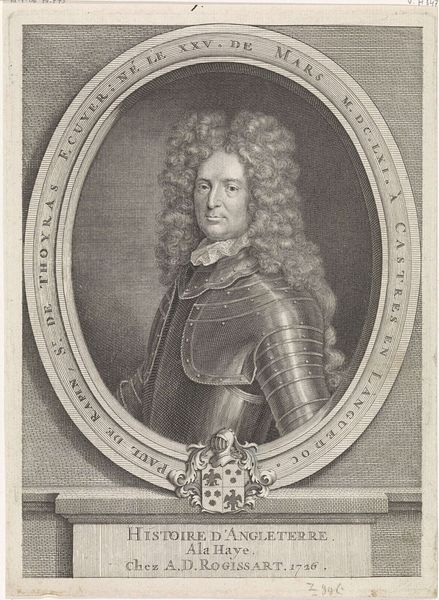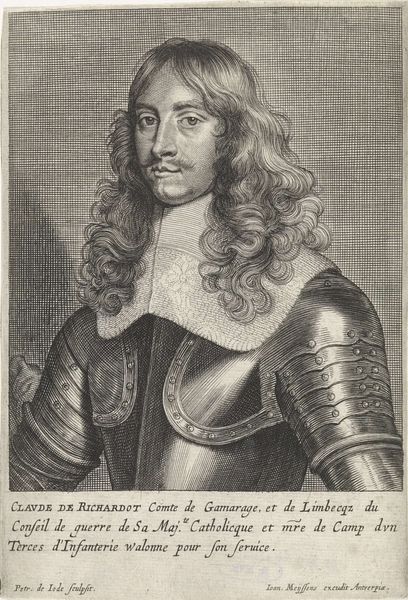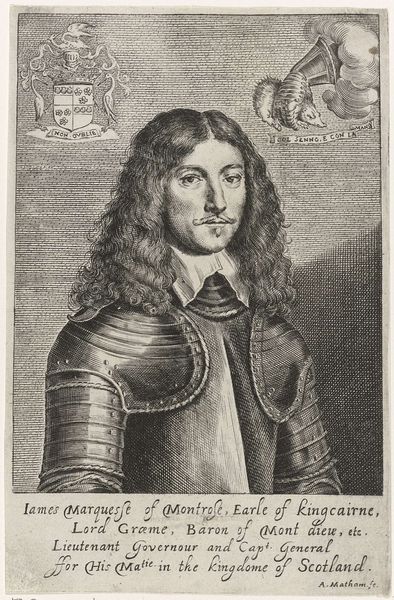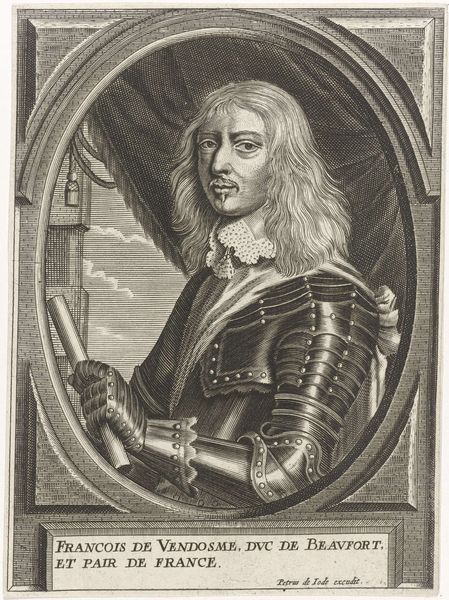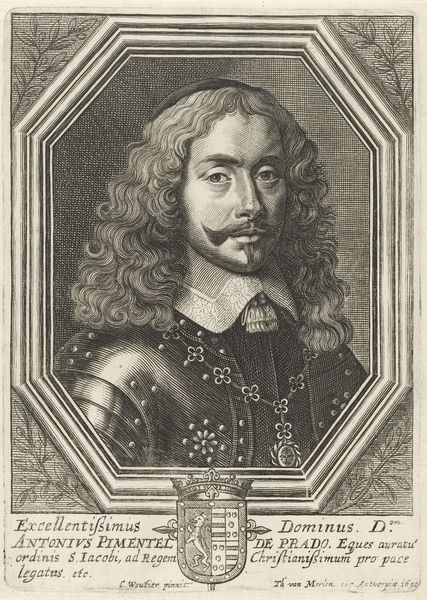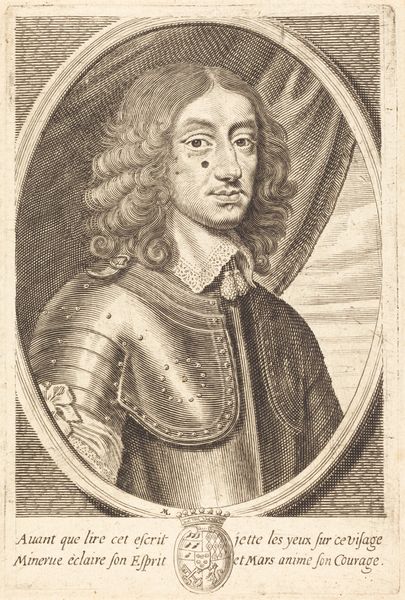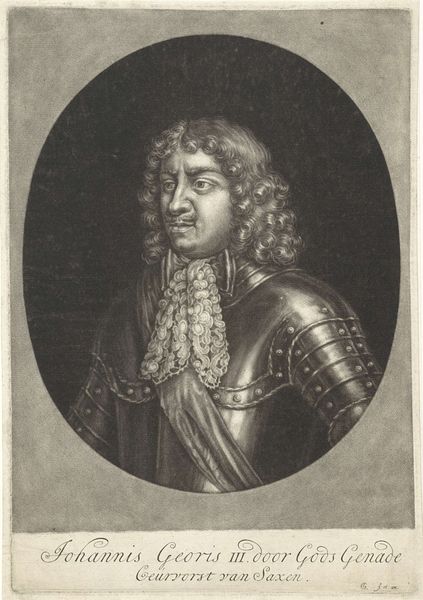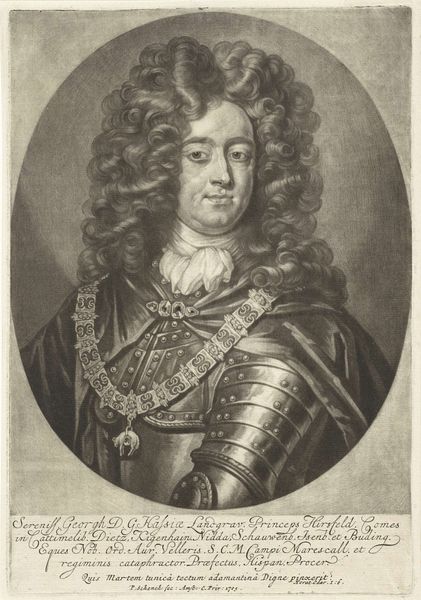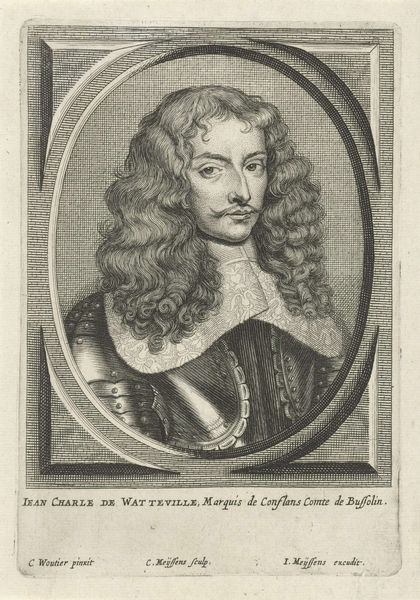
metal, engraving
#
portrait
#
baroque
#
metal
#
old engraving style
#
engraving
Dimensions: height 176 mm, width 119 mm
Copyright: Rijks Museum: Open Domain
Curator: This engraving, now held at the Rijksmuseum, is titled "Portret van Eugène de Berghes" and dates to sometime between 1650 and 1670. Cornelis Meyssens created it using metal engraving techniques. Editor: There’s a severity to it. The crisp lines emphasize the weight of his armor, yet there’s a delicacy in the depiction of his flowing hair. It feels like a study in contrasts—strength and vulnerability, authority and accessibility. Curator: Yes, portraits of this era were often carefully constructed to convey specific messages about status and power. De Berghes, identified as the Comte de Grimberghe in the inscription, clearly wanted to project an image of strength through his armor and the controlled formality of the composition. Editor: It makes me consider who gets memorialized in this way. Power defines portraiture. Who gets left out of the frame? I immediately start wondering about the unnamed people who enabled De Berghes’s power – whose labor or even exploitation funded his lifestyle and this image? Curator: That's an important perspective to bring to any historical portrait. While the piece might seem like a straightforward representation of nobility, the social context adds layers of complexity. Meyssens was active in Antwerp during the mid-17th century and portrait engravings like these played a vital role in disseminating images of influential figures across Europe. These weren't just artworks, they were tools for building reputations and solidifying social hierarchies. Editor: And controlling the narrative. An engraving allows for reproducibility, creating multiple versions of a controlled image to solidify perception. The stern gaze, the polished armor– everything works to reinforce a desired narrative about this man and his place in society. Do you feel this resonates even today in terms of the types of public image people wish to craft about themselves? Curator: Certainly. Consider how political leaders use visual media even now to craft and control public perceptions. Editor: Looking at this engraving then prompts consideration of how portraiture perpetuates, disrupts or reinterprets established social power structures and the meaning they carry. Curator: Precisely. It is also fascinating to note the material limitations of the technique influencing the final result, but let's move along.
Comments
No comments
Be the first to comment and join the conversation on the ultimate creative platform.
